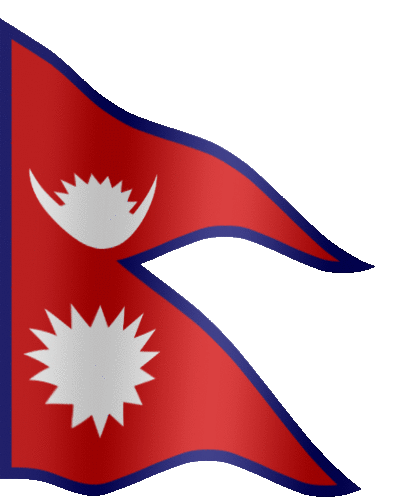PROJECT IMPLEMENTATION DIRECTORATE (PID)
Government of Nepal has accorded a high priority to the task of providing safe and adequate drinking water in an equitable manner to the people of Kathmandu Valley. Residents of Kathmandu valley have been suffering from the hardship caused due to lack of adequate and safe drinking water for a long time. The Government started Melamchi Water Supply Project in December 2000, to solve the chronic drinking water shortage in valley on a sustainable manner.
Melamchi Project envisages transfer of 510 MLD water to Kathmandu Valley from Melamchi, Yangri and Larke Rivers of Sindhupalchowk District. Phase 1 of the Project includes diversion of 170 MLD water from Melamchi through 26.5 km long water tunnel capable to carry 540 MLD, which would be treated at Sundarijal Water Treatment Plant in Kathmandu and distributed through a Bulk Distribution System (BDS) of about 77 km with 10 newly constructed service reservoirs located at different places of the Valley. These reservoirs will supply water to household via entirely new distribution system called Distribution Network Improvement (DNI). Currently, 1045 km DNI has been completed and 720 km is under construction. In addition to ADB financing the Government of Nepal has allocated funds from its own resources for completion of some DNIs within the Ring Road of Kathmandu Valley and a second transmission line of 11 km pipes is being laid from Sundarijal to Chabahil in order to transport all the water to be received from Melamchi, Yangri and Larke Rivers.
In Phase 2, GON has planned to divert Yangree and Larke Rivers with assistance from ADB which will supply additional 170 MLD water from each river. It includes construction of 11 km tunnel, 2 number of Headworks and additional 340 MLD Water Treatment Plant at Sundarijal WTP premise. Similarly, additional Bulk Distribution Systems (BDS) and Distribution Network Improvement (DNI) will be implemented to completely cover the KUKL service area, which is spread across all the Municipalities of the Kathmandu Valley
Initially, the Melamchi Water Supply Project was designed to implement all of these activities under the umbrella of the Melamchi Water Supply Development Board, but later in February 2008, the project was restructured into Subprojects 1 & 2 for its efficient implementation. Under Subproject 1, construction of 510 MLD capacity Melamchi Tunnel and construction of a 170 MLD Water Treatment Plant (WTP) at Sundarijal has been assigned to the Melamchi Water Supply Development Board (MWSDD).
As of now, the construction of the entire tunnel have been fully completed and commissioned, however, the Headworks were yet to be completed and interrupted due to June 2021 flood which damaged the Headworks severely and other associated structures including the river banks on the upstream of the river. The completion of the works under Phase 1 is pre-requisite for successful completion of the Phase-2 works described hereunder.
Scope of Sub-Project 2, being implemented by the Project Implementation Directorate (PID) of Kathmandu Upatayaka Khanepani Limited (KUKL) includes Water Supply works and Sewerage works through ADB assistance and the government's own resources. There are 3 water sector projects currently under implementation by PID, 2 of them with the assistance of ADB and one with the GON only financing. One project with financing of ADB has been completed and closed. Water Supply Projects include construction of about 10 service reservoirs at various locations in the Valley (Mahankalchaur, Bansbari, Paani Pokhari, Balaju, Khumaltar, Arubari, Tigni, Katunje and Kritipur), construction of a 77 km Bulk Distribution System (BDS) pipelines to supply water from Sundarijal WTP to the service reservoirs. Likewise, Distribution Network Improvement (DNI) works is designed to supply water to every household through laying of about 1000 km pipe line network. The above mentioned works are now completed but some length of DNI are yet to be commissioned and delayed due to non-availability of Melamchi water
Some DNI works of about 700 km are under implementation with GON funding and design of approximately 1500 km of DNIs are near to completion and ready for implementation. These works can be started immediately as the funding is available.
Similarly, 5 Waste Water Treatment Plants (WWTP) of approximately 138 MLD capacity in six different locations of the Valley are under construction including 2 Decentralized Wastewater Treatment System (DEWATS). One of the WWTPs at Guheshowri with capacity 32.4 MLD has been completed and is in operation. Likewise, 30 km of Interceptor sewers have been constructed along the rivers Hanumante, Manohara and Khasyang Khusung and about 8 km of sewer networks is under construction or planned.
There is a need of more WWTPS and DEWATS to be constructed for the treatment of wastewater in different parts of Kathmandu Valley in order to maintain the river system of the Valley alive. PID is planning for implementation of additional WWTPS and DEWATS with preparation of preliminary design of the facilities.
For the efficient management of water and wastewater systems in Kathmandu Valley, four key entities have been established under the Ministry of Water Supply. These are: (i) the Kathmandu Valley Water Supply Management Board (KVWSMB), asset owner of water and wastewater systems within the Kathmandu Valley; (ii) the Water Supply Tariff Fixation Commission (WSTFC) responsible for the economic regulation of the sector; (iii) the Kathmandu Upatyaka Khanepani Limited (KUKL) in charge of operating the assets under lease and license from KVWSMB, and (iv) Project Implementation Directorate (PID) for developing the water and wastewater related assets within the Kathmandu Valley.


